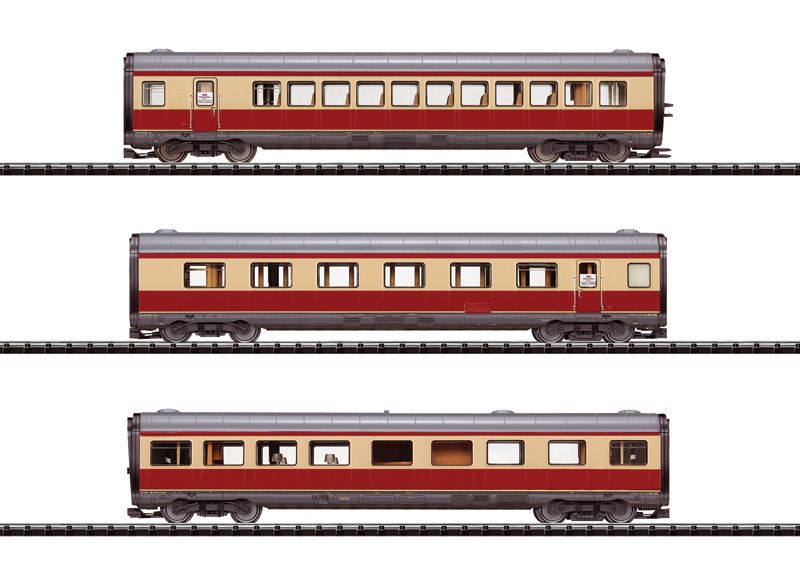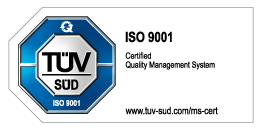Add-On Car Set for the Gas Turbine Powered Rail Car Train.
Prototype: German Federal Railroad (DB) class 602 InterCity train. 3 intermediate cars: open seating car, dining car, compartment car. Use: InterCity service.
Most Important Facts
| Article No. | 23315 |
|---|---|
| Gauge / Design type | Trix H0 / |
| Era | IV |
| Kind | Passenger Car Sets |
Check with your local dealer Now available via speciality dealer. This exclusive article is not available in our online shop, instead you can purchased them from specific retailers. Please contact your local retailer. Find Dealer
Highlights
- Metal construction.
- Closed transitions with guide mechanisms.
- Interior lighting in the train can be digitally controlled.
-
Product description
Model: Era IV. The cars have die-cast metal bodies and frames. Built-in interior lighting, which can be controlled digitally throughout the entire train. Continuous electrical connections and special close couplings with guide mechanisms between the cars. Separately applied grab irons.
The train is lengthened by 629 mm / 24-3/4".Available starting in the 2nd quarter of 2005.
An AC version of this model is available in the Märklin assortment under item no. 43116.
Spare parts for our articles can be found here in our spare parts search.
-
Publications
- New Items 2005 - Trix Exclusive 01/2005 - Main Catalog 2006
-
Prototype information
The success of TEE and InterCity service pushed these elegant diesel powered rail car trains to the limits of their capacity. They needed more power in order for 10-car units to reach speeds of 160 km/h or 100 mph. More powerful diesel motors would have been too large and too heavy, so the German Federal Railroad decided on turbine propulsion. The first class 601 powered end car was rebuilt in 1970/1971. The end car was equipped with a 2,400 hp turbine to replace the 1,200 hp diesel motor. Although it was twice as powerful, the turbine was more compact in design and used considerably more air in its combustion process. Huge intake air, ventilation, and exhaust gas ducts filled the round nose of the powered end car. On the outside the new propulsion could be identified by the wide exhaust stack between the windows of the cab and by the additional air intakes. They ensured that the turbines took in sufficient air in both directions of travel, i.e. with a powered end car at the rear of the train.




